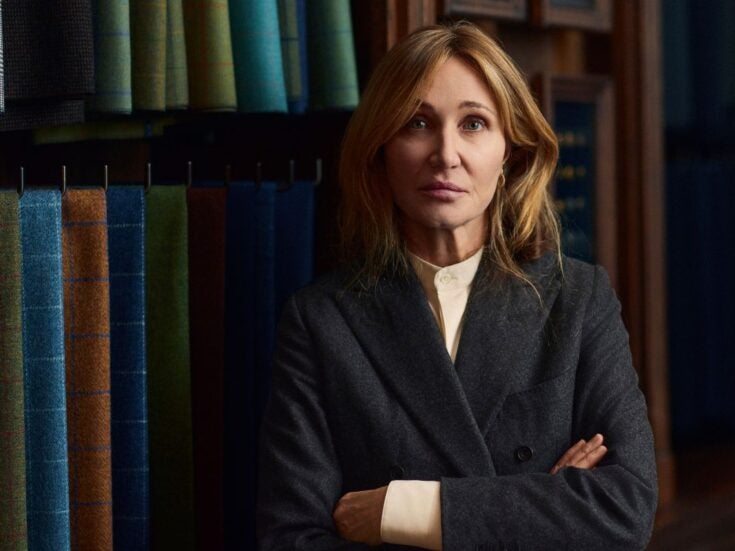
Better than Bordeaux? The Napa Valley’s Spottswoode vintages are up there with the best of the best. President Beth Novak tells Spear’s the story of an emerging dynasty. Photography by Thomas Heinser
IF YOU EVER find yourself invited to the White House for dinner, there’s a good chance that the wine you drink will be a Spottswoode Cabernet Sauvignon or Sauvignon Blanc. The 40-acre, family-owned Napa Valley winery just outside the small town of St Helena has long been a favourite of US presidents — especially Bill Clinton and now Barack Obama.

Hanging on the wall of the bustling, high-ceilinged tasting room and wine library office of Beth Novak, whose parents bought the run-down, old, pre-Prohibition wine estate and Victorian-style mansion in 1972, are framed letters from the White House profusely thanking the family for their wine. Sitting alongside is a signed photograph of Ronald Reagan, who proudly served this Californian fine wine to French and Italian presidents. In America, such embossed White House letters are the US equivalent of getting a Royal Warrant.
The estate is beautifully kept and boasts an exceptional 1882 stone cellar building, which the family renovated in 1990. Varietals grown on the estate include Cabernet Franc, Cabernet Sauvignon, Sauvignon Musque, Sauvignon Blanc and Petit Verdot. The entire farm is organic and eco-friendly, with olive groves, an insectary, chickens, an owl box, solar power, beehives and an enchanting creek that runs along the rocky edge of the estate. Not forgetting the Victorian house itself, which has expansive gardens that include huge oak trees, fruit trees, date palm trees, gravel paths and enough exotic plants and bulbs to have kept David Hicks busy gardening for a lifetime.

Unlike Napa Valley’s better known wineries, the estate is not open to the public, although any members who happen to find themselves in northern California can see the vineyard by special arrangement. Only 1,532 cases of the 2004 vintage of Spottswoode Estate Cabernet Sauvignon were produced when they bottled it in 2007 (along with 220 cases of magnums), and Robert Parker regularly awards the wine points in the upper-90s.
Little surprise, then, that wine is allocated on a strict waiting-list basis to some of the world’s top restaurants, hotels and clubs, and also through its exclusive mailing list of private wine collectors and connoisseurs. ‘What’s nice is that we have a long-term following and we only allow a maximum of one case per client,’ says Novak. The 2005 Cabernet vintage was released in September 2008.
When the FT’s wine writer and master of wine Jancis Robinson came to the estate for a ‘vertical tasting’ in two ‘flights’ — that’s wine-speak for tasting every vintage in two different sessions — she raved about the quality. Of the 1994 Cabernet, Robinson’s tasting notes stated: ‘Real refreshment and delicacy. Transparent and really lifted and elegant. By no means obvious, but rewarding.’
ALTHOUGH A FEW high-end wine shops carry Spottswoode, it is not aggressively marketed because the winery quickly sells out through word-of-mouth when the wine is released. Regular buyers include John York, owner of the San Francisco 49ers, Peter Magowan, former owner of baseball’s San Francisco Giants, and the actor John Cusack.
‘It’s very difficult to obtain because it is all allocated,’ says Novak.
‘The people that buy Spottswoode are people who know about the wine… A friend of mine was at the Sundance Film Festival recently and saw Bono and John Cusack having dinner together drinking Spottswoode. Apparently it’s one of his [Cusack’s] favourite wines.’

The history of Spottswoode is as rich and complex as any of the wines or vines produced today by the Novak family. The estate celebrated its 125th anniversary in 2007. It was founded in 1882 by a German immigrant hotel magnate called George Schonewald, who purchased 31 acres of farmland at the foot of the Mayacamas mountains in Napa Valley. One of the first things he did was plant 17 acres of vineyards.
Schonewald was the manager of the Hotel del Monte in Monterey, California, and the large Victorian estate house — which he called ‘Esmeralda’ — was inspired by the design of the hotel. Inside, the rooms have enormous ceilings and the ground floor has a grand reception room that is still very much used by the Novak family.
In 1884, Schonewald sold off part of the estate to a man called Frank Kraft, who built the original sandstone wine cellar that became known as the Kraft Winery. In later years, the estate was badly hit by both the Depression and — worse still — Prohibition. By the time Prohibition was introduced in 1919, the estate had been bought by the Spotts family, who renamed the property Spottswoode. They also expediently changed their religion to Catholic, as Catholic winemakers were allowed to make wine ‘for sacramental purposes’.

Unfortunately, however, the demand from the church was not enough. By 1933, when Prohibition laws were removed, the property had become run down and was in great need of reinvestment. It remained in the Spotts family for another generation until it was sold to the Novaks in 1972, at a time when wine land in Napa Valley was priced at a bargain $2,000 an acre. Beth Novak’s father, Jack, was a burnt-out doctor with a young family from San Diego County. He was the very opposite of today’s type of dotcom tycoon, Hollywood film-maker or billionaire who will buy a winery as a token hobby career after making their fortune on Wall Street or in Silicon Valley.
THE NOVAKS HAD met at Stanford and moved to southern California, where Jack started his own practice. ‘At the age of 40, my father decided he needed a lifestyle change,’ says Beth. ‘At that time Napa Valley was an extraordinarily different place. There was no fine dining, no traffic; it was basically undiscovered. After spending a long time looking, my father chanced upon Spottswoode.’
The estate was overgrown and looked like something out of a Dickens novel, with its wrought iron gates and imposing driveway. It was being run by a 90-year-old woman — a descendant of the Spotts family — and her 60-year-old daughter, and it was not even producing its own wine on site, just grapes.
The grapes were simply harvested and sold to the local ‘co-op’, which was controlled by wine giant Gallo throughout the 1970s. ‘It was just about tonnage and sugar, and that’s how you made money. There was no real culture of fine winemaking. But my father saw the opportunity to change all that.’
The problem for the Novaks was that they knew little about structuring wines or blending varietals. ‘My parents drank wine very minimally. They didn’t really know about it at all,’ explains Novak. ‘Really and truly, it was a lifestyle change. My dad wanted to raise his children in a more rural setting, and he wanted to drive a tractor; he just didn’t want to be a doctor any more. I’d like to tell you that they knew what they were doing, but they happened to buy a great piece of wine property and they were very lucky.’

Novak was eleven when her family moved from San Diego to Napa Valley, along with her four siblings. ‘My
dad did realise his dream of driving his tractor for a number of years, and then the reality of having very little income came home to roost and he had to go back to being a doctor. Then at the age of just 44 he died, completely unexpectedly, of a heart attack.’
Her father’s death was not only devastating for the family — it also left Beth’s mother, Mary, alone with five children and the challenge of managing an under-invested wine estate at a time when Napa Valley wines were still struggling for recognition on the international wine map. If that wasn’t enough, the whole estate had to be replanted after phylloxera laid waste to the Napa Valley in 1992.
It was tough, but Mary Novak decided not to sell up. Instead she set about reinvigorating the property and pursuing their shared dream of turning Spottswoode into one of the most acclaimed wines in California. The Novak family were encouraged by the fact that several of the other top local winemaking families — including the Shafer and Duckhorn families — wanted to buy the Spottswoode grapes for their wine due to their special quality.
So what makes them special? ‘We’re on alluvial soil, it’s really good weather up here, and you’ve got Spring Mountain right here, so this area’s like the benchland. That’s what makes it special.’
FOR THE PAST twenty years or so the Novak family have quietly been at the cutting edge of winemaking in Napa Valley. The success of the Spottswoode brand is a testament to the flinty and determined character of the family, which gambled the farm — literally — on a life-changing adventure that carried huge risks. Fortunately it has paid off handsomely — local land prices around St Helena now stand at $350,000 an acre and Spottswoode is now regarded as one of the ultra-premium wines in America.
‘We knew we had the grapes, we knew we had the land, and we knew we could make a wine that could emulate and even beat the Bordeaux model,’ says Novak. When it comes to the debate between Bordeaux and Napa Valley wines, however, diplomatic Novak refuses to be drawn into which is better. ‘We have more consistency with the weather here, for certain,’ she says.
‘I hear that the weather in France this year has been very rainy with cloudy skies most of the summer. Here we have had the opposite problem in having almost too much heat. If we are honest, the only thing we have in common with Bordeaux is that we both use the same grape varietals. Beyond that — weather-wise, soil-wise, technique-wise — we’re just completely different.’
Spottswoode’s 2006 Cabernet vintage was released on 1 September 2009






